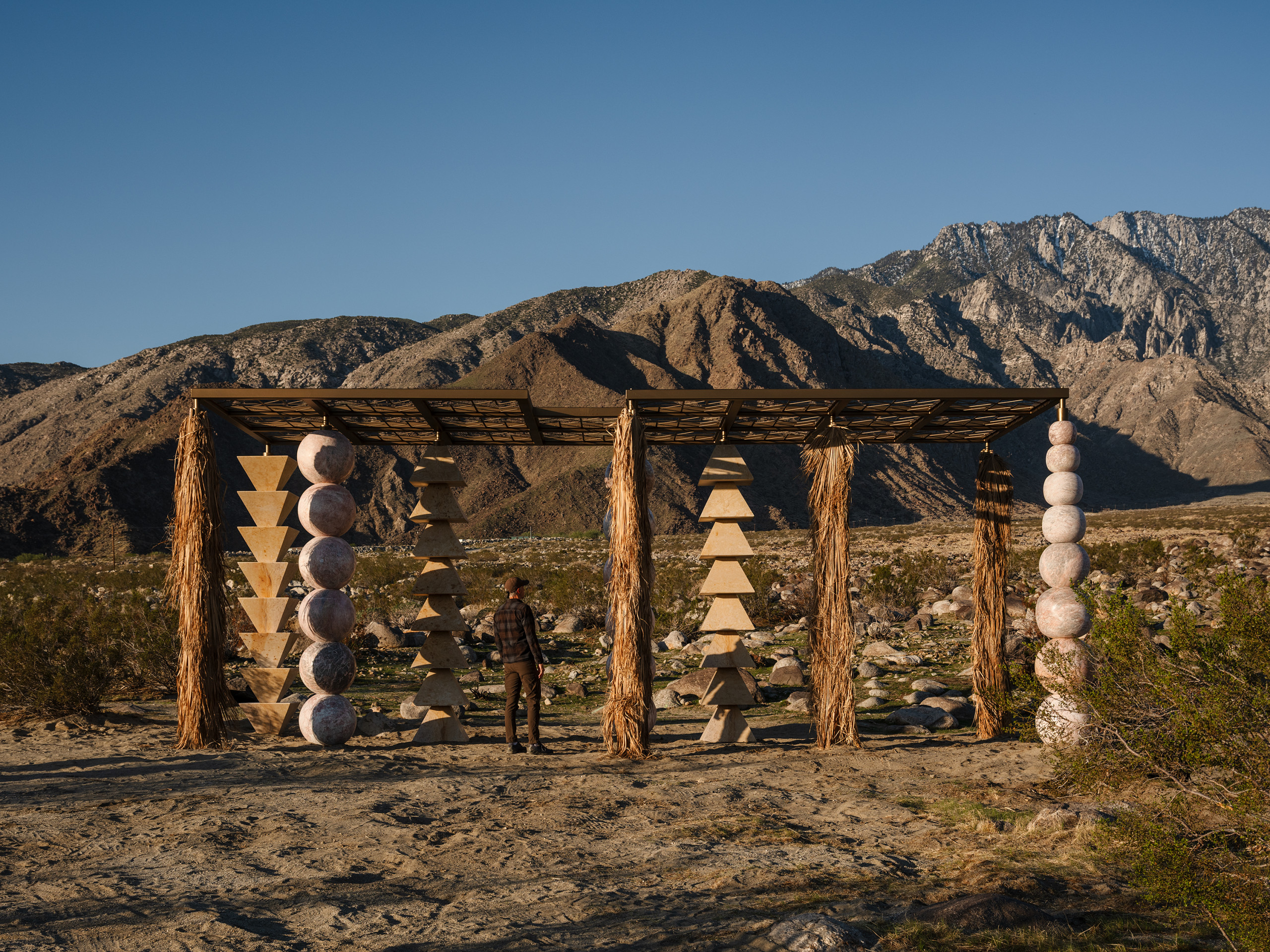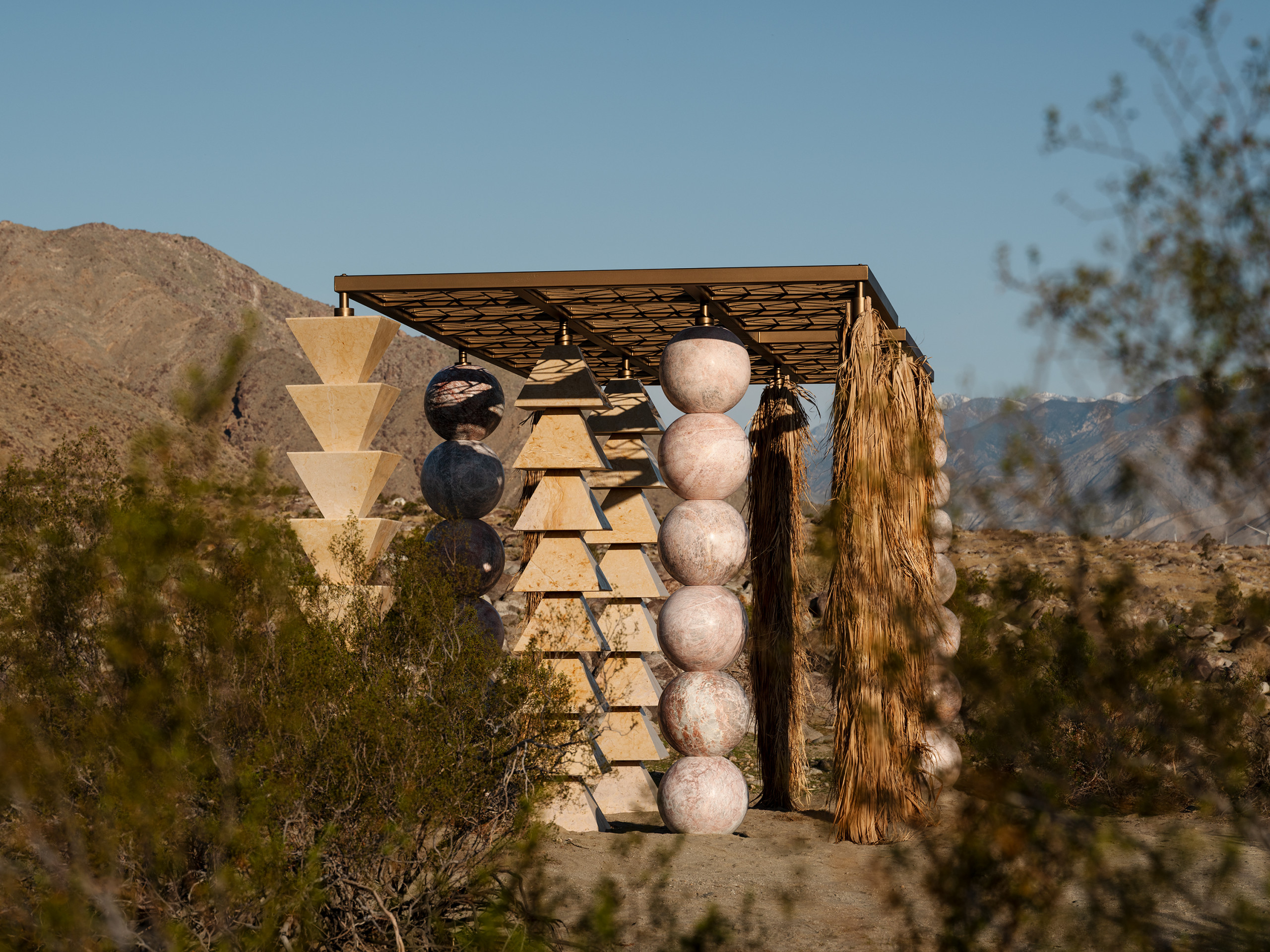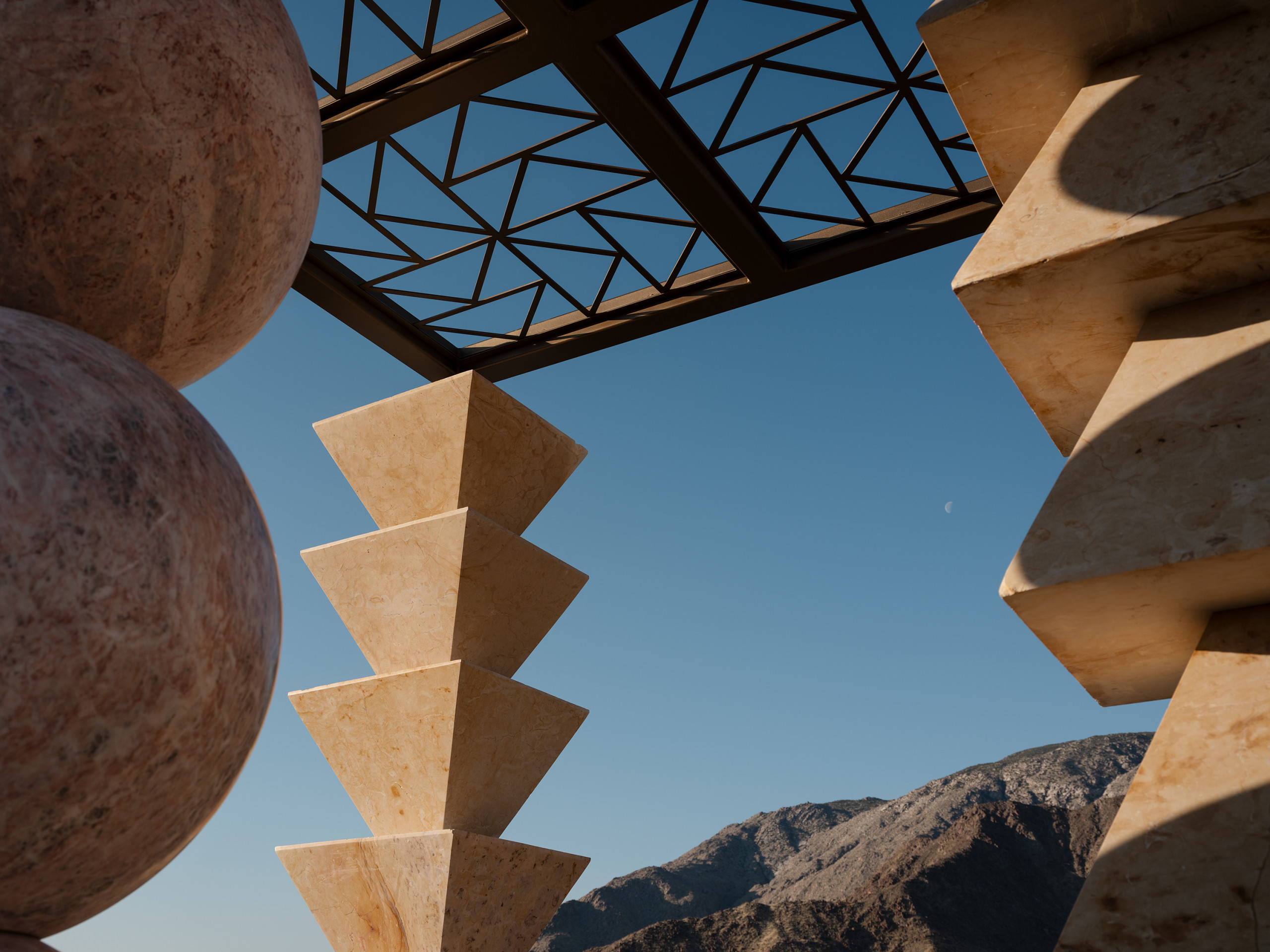Desert X 2025 is closed. This installation is no longer on view.
Kapwani Kiwanga
Plotting Rest
b. Hamilton, Ontario, Canada, 1978
Based between Paris, France, and Berlin, Germany
33.857694, -116.559111
North of Palm Springs Visitor Center at Tramway Road, Palm Springs
The most visible mark of our human presence on Earth takes architectural form, especially in the desert, where concepts of shelter, freedom, expansiveness, and enclosure have shaped midcentury dreams. Kiwanga’s pavilion-like structure reflects on the iconic design of Palm Springs, signaling protection while offering none. Its roof, a lattice made of interlocking triangles, hovers overhead, allowing the elements to pass through and casting ever-changing shadows on the ground.
Inspired by the quilting motif known as “flying geese,” this pattern resonates with the contested narratives of the Underground Railroad, serving as an encrypted guidance system for those fleeing slavery toward the perceived freedom of the North. Quilts hung from windows and clotheslines acted as coded messages, helping individuals assess dangers and find safety during their perilous journey.
Rooted in this historical context, Kiwanga’s sculpture serves as a rest stop in the imagined pursuit of freedom. Supported by columns of imported stones and local palm fronds, it embodies the dualities of permanence and impermanence, strength and fragility. The utopian vision of a better life is both present in form and clouded in meaning. The midcentury architecture of the area, exemplified by sundown towns and the restrictions of ownership, failed to ensure safety and protection for all.
Kiwanga’s sculpture fosters contemplation and hope while reminding us that history is marked by successive migrations. Manifest Destiny drove pioneers to settle in the West, but for the dispossessed and enslaved, a different promise of freedom awaited in the North.


